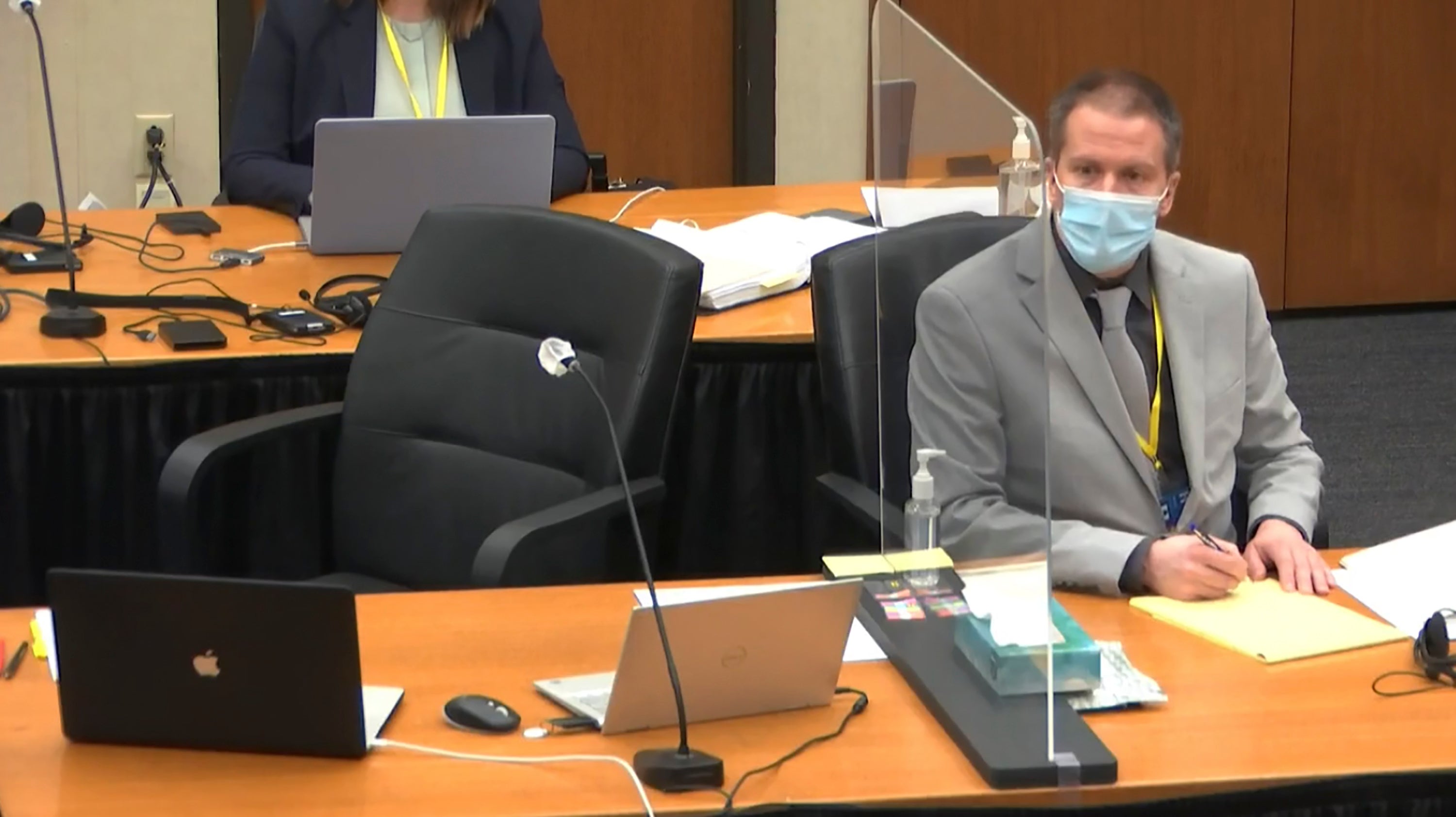Ex-officer's trial in Floyd's death shows courtroom tactics
The murder trial of a former Minneapolis police officer charged in George Floyd’s death has introduced viewers from around the world to a vast array of defense and prosecution tactics aimed at swaying the jury

Your support helps us to tell the story
From reproductive rights to climate change to Big Tech, The Independent is on the ground when the story is developing. Whether it's investigating the financials of Elon Musk's pro-Trump PAC or producing our latest documentary, 'The A Word', which shines a light on the American women fighting for reproductive rights, we know how important it is to parse out the facts from the messaging.
At such a critical moment in US history, we need reporters on the ground. Your donation allows us to keep sending journalists to speak to both sides of the story.
The Independent is trusted by Americans across the entire political spectrum. And unlike many other quality news outlets, we choose not to lock Americans out of our reporting and analysis with paywalls. We believe quality journalism should be available to everyone, paid for by those who can afford it.
Your support makes all the difference.The murder trial of a former Minneapolis police officer charged in George Floyd s death has introduced viewers from around the world to a vast array of defense and prosecution tactics aimed at swaying the jury.
Some strategies and terms that have become part of Derek Chauvin s trial are rare outside criminal courtrooms. The Associated Press has taken closer looks into them to better explain what viewers are seeing and hearing.
CONTRIBUTING FACTORS
Video shows Chauvin pressing his knee on Floyd's neck for 9 minutes, 29 seconds last May 25. But defense attorneys are tasked with casting doubt on whether the former officer was directly responsible for the Black man's death. They've sought to argue that other factors, such as drug use, may have killed him.
A medical examiner concluded last year that Floyd’s heart stopped, complicated by how police restrained him and compressed his neck. However, narrowed arteries, high blood pressure, fentanyl intoxication and recent methamphetamine use also were listed on the death certificate as “other contributing conditions.”
Hennepin County Chief Medical Examiner Dr. Andrew Baker testified that those conditions “didn’t cause the death.”
Chauvin is charged with second- and third-degree murder and manslaughter.
His lawyer, Eric Nelson, has argued that the officer followed his training and suggested that Floyd died due to use of illegal drugs and existing health conditions.
“I ATE TOO MANY DRUGS”
Nelson has tried to play up Floyd’s drug use and sought to show Wednesday tat Floyd yelled “I ate too many drugs” as officers pinned him down.
Playing a short clip from a police body camera video, Nelson asked prosecution witness Jody Stiger, a Los Angeles Police Department sergeant who served as a prosecution use-of-force expert, if he heard Floyd say: “I ate too many drugs.”
“I can’t make that out,” Stiger replied. Nelson later replayed it for senior special agent James Reyerson with the Minnesota Bureau of Criminal Apprehension, who agreed that’s what Floyd appeared to say.
But prosecutor Matthew Frank replayed a longer clip from the same body cam video that put Floyd’s statement into broader context.
Reyerson replied: “I believe Mr. Floyd was saying, ‘I ain’t do no drugs.’”
EXCITED DELIRIUM
Experts and other Minneapolis officers have testified that the force used to subdue and detain Floyd on the pavement was excessive. This past week, jurors were introduced to the concept of “excited delirium,” a term one of the officers at the scene is heard on police body camera asking as a panicked Floyd writhed and claimed to be claustrophobic as officers tried to put him in the squad car.
One Minneapolis officer who trains others in medical care described the term on the stand as a combination of “psychomotor agitation, psychosis, hypothermia, a wide variety of other things you might see in a person or rather bizarre behavior.”
An expert in forensic medicine who works as a police surgeon for the Louisville Metro Police Department in Kentucky and as a professor of emergency medicine at the University of Louisville testified Thursday that Floyd met none of the 10 criteria developed by the American College of Emergency Physicians.
COURTROOM TECHNOLOGY
Extensive video evidence from surveillance cameras, cellphones and police body cameras of Floyd’s death may be the most critical part of the case for the defense and prosecution.
Modern courtrooms, like the one where Chauvin is being tried, use such technology as large video screens, projectors and up-to-date software.
Dr. Martin Tobin, a lung and critical care specialist at the Edward Hines Jr. VA Hospital and Loyola University’s medical school in Illinois used a computer animation to show how Floyd was held down on the pavement. It gave jurors a 360-degree view of where the officers were and what they were doing.
He used a composite of pictures from a bystander video to show Chauvin pressing his knee to Floyd’s neck. Floyd’s respiratory distress was growing at that point as officers held him down on his stomach, with his hands handcuffed behind his back. The images showed how Floyd tried to use his shoulder muscles to draw breath, the doctor said.
___
Find AP’s full coverage of the death of George Floyd at: https://apnews.com/hub/death-of-george-floyd